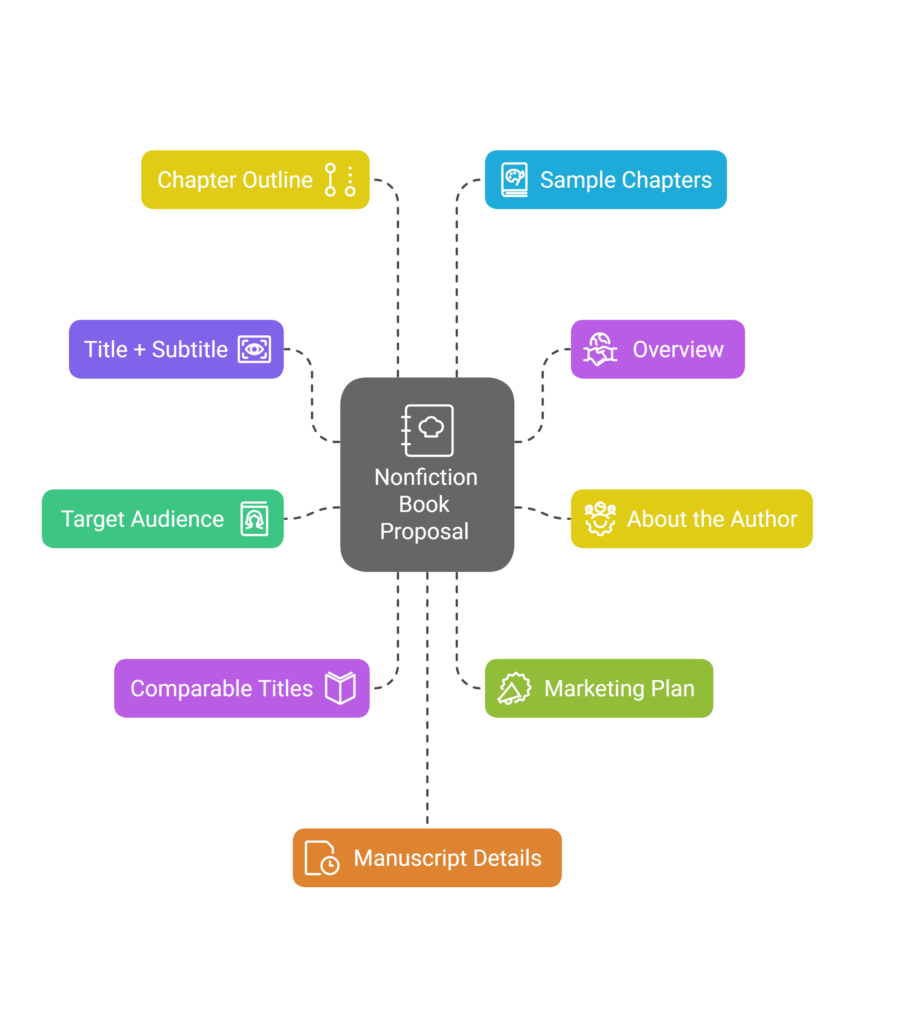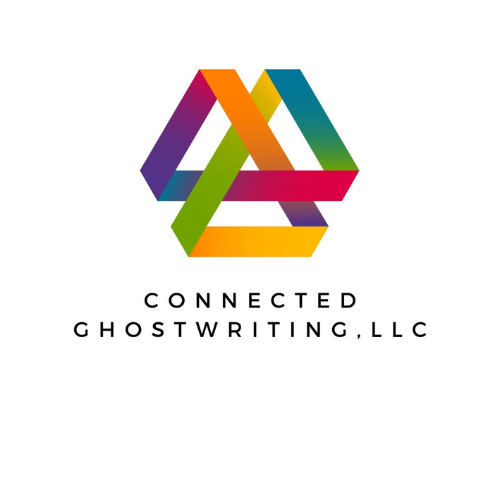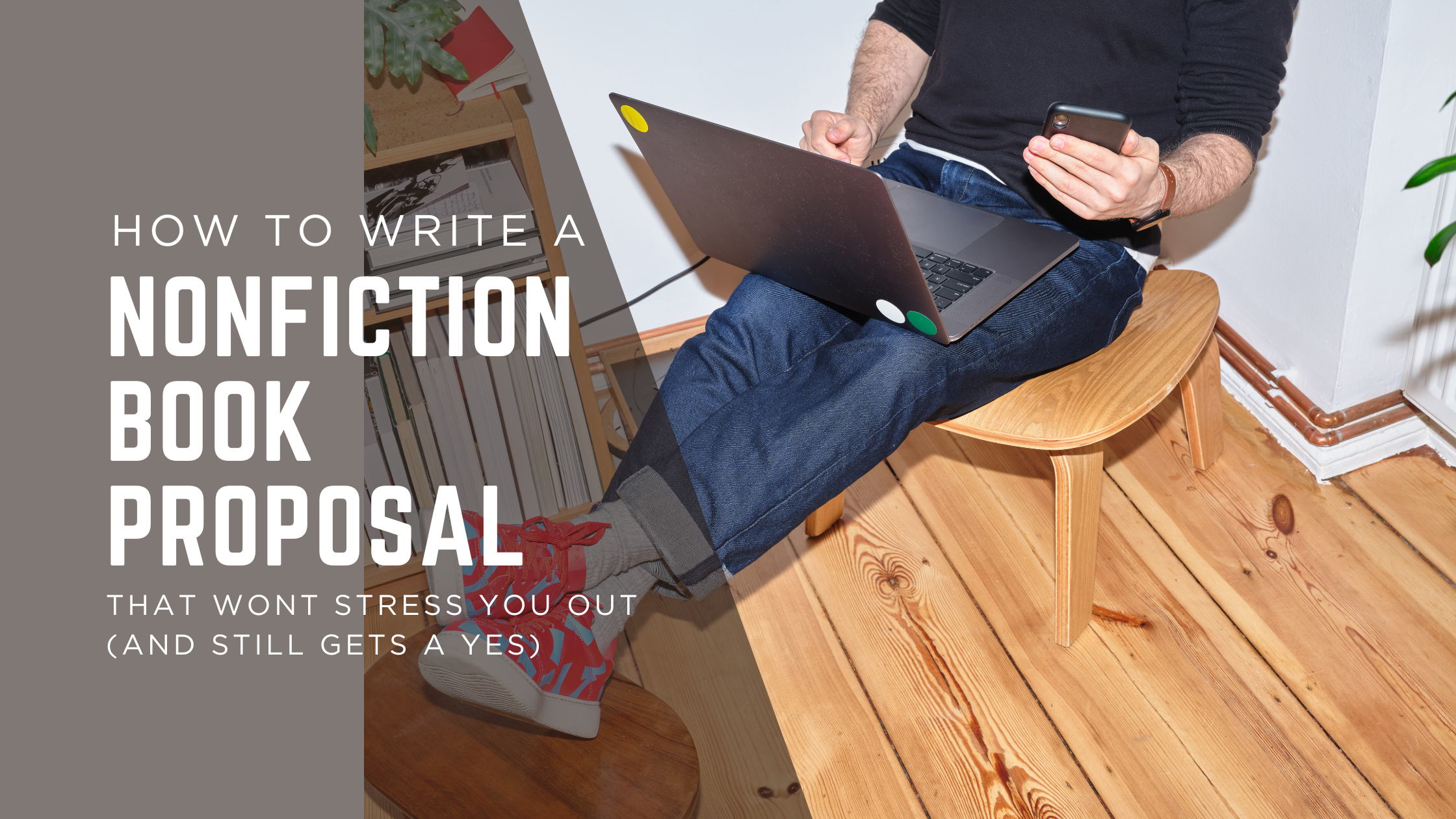You have a book idea that won’t leave you alone. Maybe it came to you in the middle of a walk, or during a conversation with a friend, or maybe it’s been tugging at your heart for years. You’ve lived the story, you know the chapter outline by heart, and you feel a deep calling to share it. But when you start researching how to get published, all the advice sounds… corporate. Formal. Like you need to put on someone else’s blazer and smile through clenched teeth.
Let’s rewrite that.
As a ghostwriter and coach who works with mission-driven authors, I want to demystify the nonfiction book proposal process and offer you a different way forward—one that honors your voice, your values, and your vision.
This post is your in-depth guide to writing a nonfiction book proposal that still gets a yes from agents and publishing houses—without losing your soul in the process. And if you want a more hands-on version, I’ve created a downloadable Google Doc you can use right now. Get the free Book Proposal Template here.
Why You Need a Book Proposal (Even If You’re Self-Publishing)
A nonfiction book proposal isn’t just a formality. It’s a foundation. Whether you’re querying a literary agent, pitching university presses, or even self-publishing, a proposal gives you clarity on what your book is really about, who it’s for, and how you’re going to reach them. It’s your way of saying, “Here’s the story I’m here to tell, and here’s why it matters.”
For traditional publishing, a nonfiction book proposal is essential. Most publishers do not want a full manuscript upfront—they want a clear, compelling proposal with a few sample chapters. A strong proposal can lead to a book deal before you finish the entire book.
What Goes Into a Nonfiction Book Proposal?

Here are the key components of a book proposal, whether you’re working with a literary agent or submitting directly to publishing houses:
1. Title + Subtitle
This is your first impression. You can treat it like a working title, but aim for clarity and resonance.
2. Overview
This is your big pitch. Describe the cultural moment, challenge, or longing your book responds to. For self-help or prescriptive nonfiction, you might frame the problem and offer your book as the solution. If you’re writing memoir or narrative nonfiction, this can start with a symbolic scene.
Make this section vibrant and personal. This is where you show what makes your book urgent, unique, and worth publishing.
3. About the Author
This isn’t your whole life story. It’s your author bio with heart. Share why you are the one to write this book. This might include your professional experience, community roles, lived expertise, or even spiritual insights. Show both your credibility and your connection to the material. Avoid being humble here – it’s not the place for that. If you struggle to write this, ask your business bestie or a trusted friend to draft it for you and then edit.
4. Target Audience
Be specific. Who is this book for? What are they searching for on Amazon late at night? What podcasts do they listen to? How does your book meet them exactly where they are? For more on identifying your target audience, I suggest our Reader First course, which walks you through how to narrow down your ideal reader and plan a book directed at their pain points.
5. Comparable Titles
Also called “comp titles,” this section shows you understand the publishing landscape. Choose 5-10 existing books that share a similar vibe, audience, or structure. Briefly explain why your book belongs alongside them and how it stands apart.
I tell my coaching clients to head to a bookstore and take a look at the shelf where your book will sit. What books are next to it? What books get face-out placement instead of spine placement? Avoid listing a pile of bestsellers, and shoot for a range of popularity.
6. Marketing Plan
This is where most first-time authors get stuck. Your goal here is to show how you’ll help your book reach the right readers. Do you have a podcast? A coaching practice? A loyal Instagram or LinkedIn following? Have you been a guest on others’ platforms, or have plans to collaborate with influencers?
Divide this section into parts: social media, speaking, newsletter, podcast interviews, partnerships, and any connections you have to relevant communities or organizations.
7. Chapter Outline or Table of Contents
Give a clear overview of your book’s structure. List your chapter titles and provide 1-2 paragraphs per chapter explaining what each one delivers. Think of this as your book’s roadmap.
8. Sample Chapters
Choose your strongest 1-2 sample chapters. For memoir, this is usually the beginning. For self-help or hybrid nonfiction, pick the most engaging and transformational content. This is your chance to show off your writing style and the depth of your message.
9. Manuscript Details
What’s the anticipated word count? How far along are you? When can you deliver a full manuscript? Be honest but confident here.
Common Mistakes First-Time Authors Make
- Writing in a voice that doesn’t feel like your own
- Being too vague about your target audience
- Assuming your social media presence doesn’t matter (it does—but it doesn’t have to be huge)
- Trying to be all things to all people instead of focusing your message
- Ignoring the value of comp titles and market context
What About a Query Letter?
A query letter is like a condensed version of your proposal—usually one page, sent to a literary agent or acquisitions editor. It introduces your book idea, highlights your background, and invites the agent to request your full proposal.
I’ll cover query letters more deeply in a future blog post, but for now: yes, you still need a full proposal for nonfiction.
A great query opens the door, but the proposal gets you through it.

Why I Wrote This Template
I’ve worked with dozens of brilliant, intuitive, wise entrepreneurs who have world-shifting ideas—and who shut down the minute they see a writing a book proposal on their to-do list.
That’s why I created this book proposal template: to help you bring your full self to the publishing process. You don’t have to write like someone else to get a book deal. You just have to write clearly, powerfully, and with intention.
Download the Free Book Proposal Template
If you want help organizing your thoughts and writing a proposal that truly sounds like you, download my free Book Proposal Template here.
It covers everything mentioned above in a simple, fill-in-the-blank format designed for nonfiction authors who are ready to pitch their first book, finish a complete manuscript, or explore traditional publishing without losing their voice.
This template will walk you through each section, helping you clarify your message, build your author platform, and create a proposal that feels aligned and strategic. Keep in mind, though, that every publisher has a particular style for proposals, so it’s a good idea to look at their requirements and tweak your proposal to fit each publisher or agent you submit to.
Starting With a Proposal Can Help You Finish
Writing a nonfiction book proposal is about more than getting a yes from a literary agent or publishing house. It’s about owning your message. About naming your selling point with clarity and conviction. About honoring your writing style and making space for the wisdom that only you can share.
And if you’re sitting there wondering if your book idea is “good enough,” here’s what I’ll say: If it won’t leave you alone, it’s time.
Don’t wait until the entire book is perfect or the timing feels right. Start with the proposal. It will guide your writing, sharpen your thinking, and help you move your book from dream to reality.
You already have the voice.
You already have the story.
You already have the calling.
Now let’s get it on the page.
Ready to shape your book idea into a winning proposal? Book your free consultation today.


